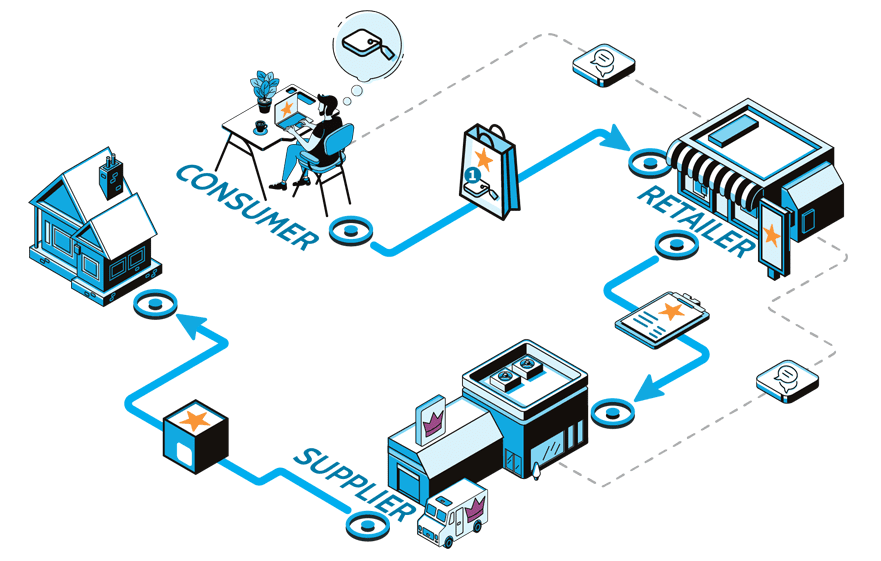Basics of Drop-Ship EDI for Retailers,
Suppliers, 3PLs and More
To keep up with consumer demands, more retailers are turning to suppliers, vendors and third-party logistics providers to help them with fulfilling eCommerce orders by automating drop ship EDI. With eCommerce document automation, retailers and their trading partners can make more sales and improve consumer engagement by being able to update the order process in real time – it’s a win-win! Read on to learn what is drop-ship EDI.
Drop-Ship EDI Basics
Unlock more trading partner relationships, profitably ship single parcels and exceed consumer expectations with an EDI drop-ship program.
What is Drop Shipping?
Drop shipping is an inventory and supply chain management method in which the retailer offers a product for sale but does not keep goods in stock. Instead, the order information is sent to the third-party for fulfillment and shipment directly to the customer.
Who Can Benefit from Drop-Ship EDI?
Vendors, suppliers, distributors, logistics providers, retailers and eCommerce stores – Everyone in the supply chain benefits from successful drop shipping programs because it opens up possibilities for more sales and revenue.

What Type of Drop Ship EDI Are You Doing?
(No matter what you do, we’ve got a solution to streamline it.)
How does drop ship EDI work?
To see where drop ship EDI is used, follow the path of a consumer ordering an item to when it’s delivered to their house.

Consumers place orders with the retailer
Supplier processes the order
The supplier will pick and pack the consumer’s order using shipping documentation with retailer’s brand, including branded packing slips and labels (UCC-128).
Retailer provides order updates
Retailer notifies the consumer with continuous order and shipment information.
Supplier ships to the consumer
Supplier alerts the retailer with shipment information (ASN/EDI 856) and submits an invoice (EDI 810).
Consumer receives product
In the event the consumer doesn’t love the item, supplier and retailer handle returns (EDI 180) as needed based on agreed-upon process.
Constant communication
Suppliers provide detailed item information to the retailer and timely inventory updates so the retailer can set up items within their item system and on their website.